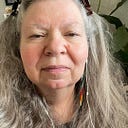The Language We Use With Animals
One of the questions I’m often asked is about the language I use with animals. For instance, I stay away from the words ‘owner’ and ‘pet’ and I’m conscious of the pronouns I use, avoiding ‘it’. Instead, I use appropriate pronouns, ‘someone’ instead of ‘something’, ‘animal pal’ and ‘caretaker’.
Why?
The words we use with animals is a reflection of our relationship with them.
The Lack In Our Language
I realize I’m making sweeping statements in what is actually a very nuanced conversation. However, I believe we are at a critical juncture in our relationship with animals and that we need to make changes. Becoming aware of the words we use with and about animals is one way to start making those changes.
As I’ve said before:
When we examine our basic contemporary culture, our relationship with animals is often under-rated or entirely dismissed by many folx. “It’s just a dog/cat/bird/horse/etc, get over it” is what we frequently hear. The fact that true family can and often is created with animals is simply beyond the comprehension of many. Our culture doesn’t have a lexicon that includes, much less embraces, the relationship between humans and animals.
So we are stuck using outdated, inadequate and incorrect words like ‘pet’ and ‘owner’. The problem with words like that is by simple definition they set up a hierarchy of power-over animals, instead of one of true kinship.
Think about it. The word ‘owner’ is possessive, indicating that someone or something belongs to you. When that happens, the ‘owned’ becomes the property of the ‘owner’, being at their whim and whimsy.
The word ‘pet’ implies the animal does not have their own agency and must be taken care of. This very word sets up a hierarchical relationship placing humans ‘above’ animals, blinding us to the mutual true kinship relationship that is possible
Changing Your Perspective
I invite you to start becoming aware of the words you use with animals. Once you are aware of that, the next step is to begin to change it. How do you do that? Here are some ways to start:
- Be kind to yourself. You’ve been using this language your entire life. It’s not going to change overnight
- Make notes when you find yourself doing this. Look for patterns or situations that precipitate the old languaging pattern
- Ask for help. Find someone you trust and ask them to gently point out when you’re using hierarchical words
- Start observing the words of others. Not to change them, but to become aware of how prevalent this habit is
I invite you to watch this 7.33 minute video to find out more about my perspective on this powerful topic.
If this is a new concept to you, be sure to check out my blog and Instagram posts to learn more.
Janet Roper is an animist, elder and communicator and for 20+ years has helped people restructure their relationship with animals. Two of her most popular resources are her monthly newsletter and her 5 email introductory series to her signature program Deepen.
